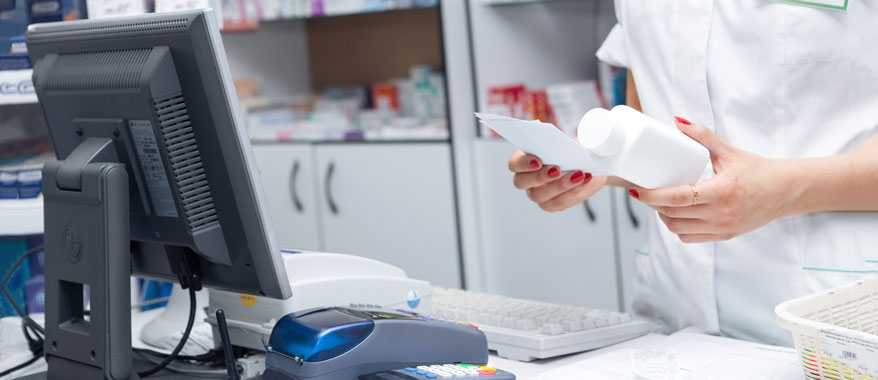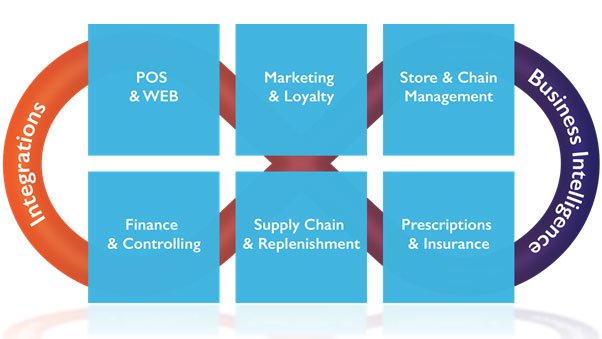
The pharmaceutical market is very competitive: drugstores need to fulfil customer demands for great service, while at the same time satisfying complex legislations and regulations. As if these challenges were not tough enough, many pharmacies are also struggling with outdated, rigid legacy systems. Some pharmacies are running systems that were developed 10-20 years ago (or even more!), and are as a consequence slow to run, hard to update, and obsolete as regards their capabilities. These old IT solutions require continuous investment to stay up and running, constantly increasing the pharmacy’s capital and operating expense (CAPEX and OPEX). This vicious circle just leads to growing costs, and reduced IT capabilities: as the pharmacy’s accounts are drained by the constant expenditure, it gets harder and harder to write off the existing software investment and invest into new, modern and flexible solutions that are easily upgradable and meet the current and future needs of the digital pharmacy.
Breaking the circle
Pharmacies will nevertheless need to make that call and start investing in new technology – and they had better do it sooner rather than later. Although it’s a big step to take, it’s necessary. And the good news is that this kind of process can be done in phases, over time. To begin, it’s important to start by defining a digital pharmacy program.
A digital pharmacy program
Planning a strategy for business development and defining future scenarios is often a challenge for management in pharmacies. The management needs to decide how the company intends to make that ideal future become reality, which can be tough. In order to define the vision, it is important to set up a digital program, implementing a new generation of digital solutions that can handle the processes of a modern pharmacy.
Defining goals and benefits
Business processes in the pharmacy industry are comprehensive, critical and regulated. Many pharmacies are trying to adapt to the fast-moving trends in retail, and to satisfy new generations of shoppers who demand easy-to-use e-commerce and mobile solutions.
When moving away from obsolete systems, it is important to clarify all the essential benefits and goals of the investment before taking a decision on the new system. The new digital architecture needs to support efficiently all critical processes in a modular way, enabling you to implement and maintain your software solutions easily. The picture below shows a simplified view of the main pharmacy processes with the needed integrations and business intelligence.

When researching new systems, three requirements are fundamental for modern pharmacies:
First, a digital approach is required to support and automate the pharmacy processes.
Secondly, all pharmacies need well-managed and scalable integration technology to seamlessly connect to national databases, data sensors, external sources etc.
Thirdly, it is vital to utilize the big data available from the pharmacy operation. For example, the transactions at the Point of Sale (POS) can provide the business with valuable insights into consumer behavior, loyalty management, upselling opportunities, category management etc. A pharmacy with the tools to use this data to automate processes and create insight can become highly competitive.
The first steps
The question is then: How can a pharmacy management team establish and start a digitizing program?
An effective way to initiate this kind of program is to establish a reference group of internal subject matter experts. These experts can provide valuable input when it comes to creating the use cases for the future solution. This team should consist of the most knowledgeable employees with high motivation for change. Only afterwards will it be the right time to define the benefits and goals for the digitalization of the pharmacy processes.
This part of the work is very important, as this is where you identify how the new solution can support the strategic goals of the company.
Below are some examples of quantifiable goals that a pharmacy chain may set, and that could be accomplished by implementing a new management system:
- Grow number of stores from 300 to 500 within four years.
- Grow number of loyalty members from one to two millions within three years.
- Shorten transaction time for handling prescriptions from six to four minutes.
- Integrate all the channels (e-commerce, physical stores and mobile app) that consumers use to shop within six months.
- Implement prescription handling on the mobile app within three months.
If the digital goals are defined in a concrete and tangible manner, it should be quite straightforward to set up an ROI calculation for the investment needed. The benefits of the digital program can then be linked to the corporate vision and KPI´s to visualize how the benefits are to be realized, and thereby document the business case for investing in a digital pharmacy program.
 Article written by Kristjan Johannsson
Article written by Kristjan Johannsson
Chief Business Development Officer
